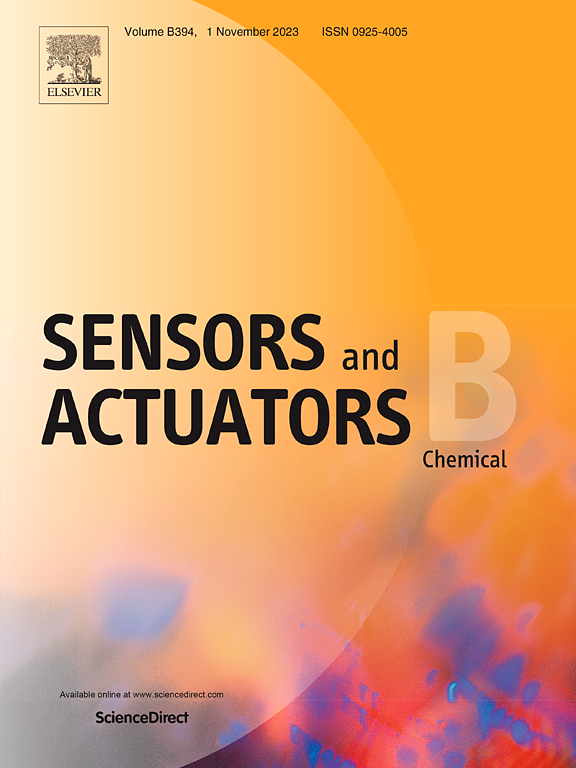利用液晶传感器筛选对胰岛淀粉样肽聚集具有不同抑制作用的小分子
IF 8
1区 化学
Q1 CHEMISTRY, ANALYTICAL
引用次数: 0
摘要
胰岛淀粉样蛋白多肽(IAPP)是胰腺β细胞与胰岛素共同分泌的一种激素。在病理条件下,IAPP聚集成细胞毒性低聚物和不溶性淀粉样蛋白原纤维,损害β细胞功能,并可能导致2型糖尿病(T2D)。虽然已经开发了各种方法来筛选淀粉样蛋白抑制剂,但许多方法都很耗时,并且需要专门的设备。在这里,我们提出了一个基于无标签液晶(LC)的传感平台,用于监测水溶液中IAPP的聚集。在LC/水界面上,LC采用同向取向,IAPP聚集体的形成破坏了LC的有序,导致在低至250 nM的浓度下出现明显的从暗到亮的光学跃迁。我们发现这种转变是由肽寡聚物的形成引起的。利用这一机制,该系统有效地区分了对IAPP聚集具有不同抑制作用的小分子,提供了清晰的LC排列变化的视觉读数。因此,该平台为实时监测肽聚集和高通量筛选潜在的抗淀粉样蛋白和抗寡聚化合物提供了一个简单有效的工具,最终促进了针对T2D和其他淀粉样蛋白相关疾病的治疗策略的发展。本文章由计算机程序翻译,如有差异,请以英文原文为准。

Screening of small molecules with varying inhibitory effects on islet amyloid peptide aggregation using liquid crystal-based sensors
Islet amyloid polypeptide (IAPP) is a hormone co-secreted with insulin from pancreatic β-cells. Under pathological conditions, IAPP aggregates into cytotoxic oligomers and insoluble amyloid fibrils, impairing β-cell function and potentially contributing to type 2 diabetes (T2D). Although various methods have been developed to screen amyloid inhibitors, many are time-consuming and require specialized equipment. Here, we present a label-free liquid crystal (LC)-based sensing platform for monitoring IAPP aggregation in aqueous solutions. At the LC/aqueous interface where the LC adopts a homeotropic orientation, the formation of IAPP aggregates disrupts the LC ordering, resulting in a distinct dark-to-bright optical transition at concentrations as low as 250 nM. We showed that this transition resulted from the formation of peptide oligomers. By using this mechanism, the system effectively differentiates small molecules with varying inhibitory effects on IAPP aggregation, offering a clear visual readout of changes in LC alignment. This platform thus provides a straightforward and efficient tool for real-time monitoring of peptide aggregation and high-throughput screening of potential anti-amyloid and anti-oligomerization compounds, ultimately facilitating the development of therapeutic strategies against T2D and other amyloid-related disorders.
求助全文
通过发布文献求助,成功后即可免费获取论文全文。
去求助
来源期刊

Sensors and Actuators B: Chemical
工程技术-电化学
CiteScore
14.60
自引率
11.90%
发文量
1776
审稿时长
3.2 months
期刊介绍:
Sensors & Actuators, B: Chemical is an international journal focused on the research and development of chemical transducers. It covers chemical sensors and biosensors, chemical actuators, and analytical microsystems. The journal is interdisciplinary, aiming to publish original works showcasing substantial advancements beyond the current state of the art in these fields, with practical applicability to solving meaningful analytical problems. Review articles are accepted by invitation from an Editor of the journal.
 求助内容:
求助内容: 应助结果提醒方式:
应助结果提醒方式:


